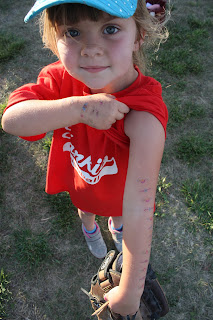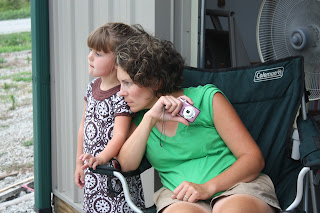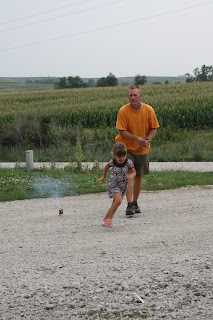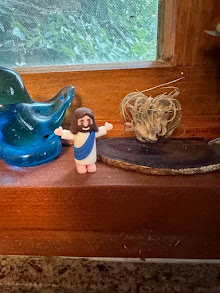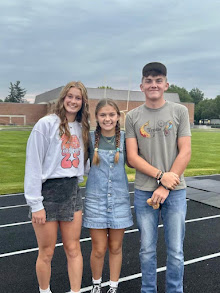Great works are performed not by strength but by perseverance............Samuel Johnson
OK. Maybe bravado isn't the most admirable of traits. But if it raise the spirits, there are worse ones.
Don Quixote: A knight must not complain of his wounds, though his bowels be dropping out.
Here in farming country there has been remarkably little whining this dry season. We've found our stiff upper lips, if not our senses of humor. Misery may love company, but we look back to our parents and grandparents and find our strength in their character. Those tales resonate; we have the photographs, the statistics, and even some of the storytellers still around to stiffen our backbones and lift our chins. These are the days of which legends are made and ties are bound. We are FAMILY; we have common cause; we survived, if not thrived, in the summer of 2012.
Romans 5:3-4 Not only so, but we also rejoice in our sufferings, because we know that suffering produces perseverance; perseverance, character; and character, hope
 And that brings me back to the letter H. H is not just for Hotter that H***. St. Paul tells us hope is the natural harvest of our character. As sure as the seasons, hope ripens from our character after perseverance follows suffering, a reassuring organic progression. Just as lovely is Emily Dickinson's verse, one nurtured and polished in my memory like a gleaming gem. Hope flutters, it shrugs off trouble like an unpleasant dream; it gathers itself and greets adversity with wordless song. When we are burdened beyond bearing with no recourse in sight, we listen inside for the song of hope planted there by our Creator.
And that brings me back to the letter H. H is not just for Hotter that H***. St. Paul tells us hope is the natural harvest of our character. As sure as the seasons, hope ripens from our character after perseverance follows suffering, a reassuring organic progression. Just as lovely is Emily Dickinson's verse, one nurtured and polished in my memory like a gleaming gem. Hope flutters, it shrugs off trouble like an unpleasant dream; it gathers itself and greets adversity with wordless song. When we are burdened beyond bearing with no recourse in sight, we listen inside for the song of hope planted there by our Creator.
Tonight we looked to the sky where clouds blossomed and thunder rolled. Tonight we listened and watched as rain drove the yellowed leaves from the sycamores and cars splashed through new puddles. It wasn't a drought buster; it wasn't relief; it wasn't enough to unfurl leaves or green grass.
 But it was the personification of Hope.
But it was the personification of Hope.
This post is dedicated to family and loved ones who demonstrate to us the best of perseverance and hope.
Romans 5:3-4 Not only so, but we also rejoice in our sufferings, because we know that suffering produces perseverance; perseverance, character; and character, hope
 And that brings me back to the letter H. H is not just for Hotter that H***. St. Paul tells us hope is the natural harvest of our character. As sure as the seasons, hope ripens from our character after perseverance follows suffering, a reassuring organic progression. Just as lovely is Emily Dickinson's verse, one nurtured and polished in my memory like a gleaming gem. Hope flutters, it shrugs off trouble like an unpleasant dream; it gathers itself and greets adversity with wordless song. When we are burdened beyond bearing with no recourse in sight, we listen inside for the song of hope planted there by our Creator.
And that brings me back to the letter H. H is not just for Hotter that H***. St. Paul tells us hope is the natural harvest of our character. As sure as the seasons, hope ripens from our character after perseverance follows suffering, a reassuring organic progression. Just as lovely is Emily Dickinson's verse, one nurtured and polished in my memory like a gleaming gem. Hope flutters, it shrugs off trouble like an unpleasant dream; it gathers itself and greets adversity with wordless song. When we are burdened beyond bearing with no recourse in sight, we listen inside for the song of hope planted there by our Creator.
“Hope” is the thing with feathers -
That perches in the soul -
And sings the tune without the words -
And never stops - at all -.........Emily Dickinson
Tonight we looked to the sky where clouds blossomed and thunder rolled. Tonight we listened and watched as rain drove the yellowed leaves from the sycamores and cars splashed through new puddles. It wasn't a drought buster; it wasn't relief; it wasn't enough to unfurl leaves or green grass.
 But it was the personification of Hope.
But it was the personification of Hope.This post is dedicated to family and loved ones who demonstrate to us the best of perseverance and hope.









-002.JPG)
.JPG)



















